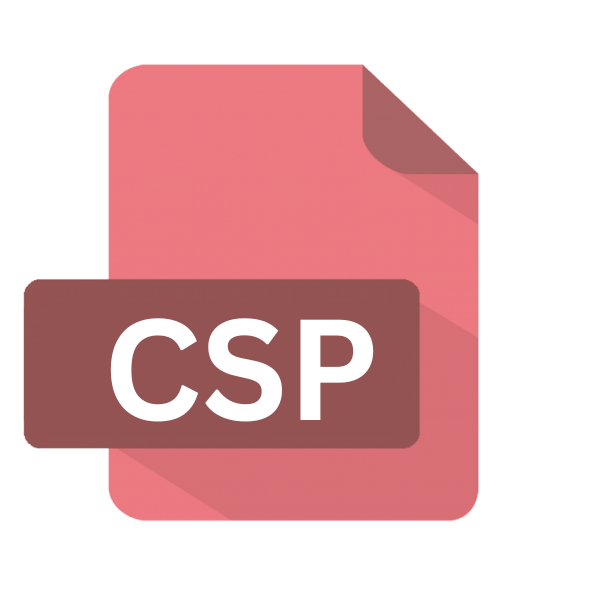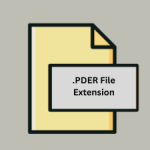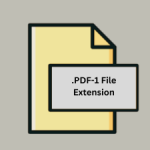.CSP File Extension

What is an CSP file?
In the realm of web development, file extensions often carry significant weight, defining the structure and functionality of the content they encapsulate. Among these, the .CSP file extension stands as a cornerstone in the landscape of dynamic web pages.
Short for Concept Server Page, .CSP files are instrumental in facilitating dynamic content generation and server-side processing.
More Information.
.CSP files emerged as a solution to the limitations of static web pages, offering a means to embed server-side scripting directly within HTML documents.
The initial purpose of .CSP files were to enable the execution of server-side scripts, allowing for dynamic content generation based on user input, database queries, or other backend processes.
This dynamic approach revolutionized web development, empowering developers to create more interactive and personalized web experiences.
Origin Of This File.
The genesis of .CSP files can be traced back to the evolution of web technologies, particularly in response to the need for more dynamic and interactive web experiences.
As the demand for dynamic content grew, developers sought efficient methods to seamlessly integrate server-side processing into web pages, thus giving birth to the Concept Server Page concept.
File Structure Technical Specification.
.CSP files typically follow a structure similar to traditional HTML documents, with the addition of server-side scripting elements. These files may contain HTML markup along with embedded server-side scripts written in languages like JavaScript, PHP, or ASP.
The server-side scripts are enclosed within special delimiters or tags, which are then processed by the web server before sending the resulting HTML to the client’s browser.
Technical specifications of .CSP files may vary depending on the web server and scripting language used. They generally adhere to standards for web development and server-side scripting, ensuring compatibility across different platforms and environments.
How to Convert the File?
Converting files, including .CSP files can be a straightforward process if you have the right tools and knowledge. Here’s a guide on how to convert .CSP files:
1. Determine Conversion Needs:
- Before proceeding, clarify why you need to convert the .CSP file. Are you aiming to edit its content, transform it into another format, or integrate it with a different system?
2. Choose the Conversion Method:
- Depending on your requirements and available resources, decide on the most suitable conversion method.
- Options include using text editors, online converters, development platforms, or custom scripts.
3. Using Text Editors:
- Open a text editor such as Notepad (Windows), TextEdit (macOS), or Vim (Linux).
- Navigate to the directory containing the .CSP file.
- Double-click the .CSP file to open it in the text editor.
- Make necessary edits to the content.
- Save the file, preserving its .CSP format, unless you’re explicitly converting it to another format.
4. Online Conversion:
- Access an online file conversion website like Zamzar or OnlineConvertFree.
- Upload the .CSP file to the converter.
- Select the desired output format (e.g., HTML, PDF).
- Initiate the conversion process.
- Once completed, download the converted file from the website.
5. Development Platforms:
- If you’re working within an Integrated Development Environment (IDE) like Visual Studio Code or IntelliJ IDEA, check for available extensions or plugins for .CSP file conversion.
- Explore the IDE’s documentation or community forums for guidance on integrating .CSP files with other formats or systems.
6. Server-side Processing:
- Utilize server-side scripting languages (e.g., JavaScript, PHP, Python) to handle .CSP file conversion tasks.
- Write scripts that parse .CSP files and generate output in the desired format (e.g., HTML, JSON).
- Ensure proper handling of server-side processing to maintain security and efficiency.
7. Custom Scripts:
- For advanced users or specific requirements, consider developing custom scripts or programs to handle .CSP file conversion.
- Choose a programming language suitable for your task (e.g., Python, Java, Node.js).
- Write scripts that implement the desired conversion logic, considering factors such as file parsing, data transformation, and output generation.
8. Validate and Test:
- After conversion, validate the output to ensure accuracy and integrity, especially if the converted file is intended for deployment or further processing.
- Test the converted file in relevant environments to confirm compatibility and functionality.
9. Documentation and Maintenance:
- Document the conversion process, including chosen methods, tools, and any custom scripts or configurations.
- Maintain clear documentation for future reference and troubleshooting, especially if multiple stakeholders are involved in the conversion process.
Advantages And Disadvantages.
Advantage:
- Dynamic Content Generation: .CSP files enable dynamic content generation, allowing web pages to adapt and respond to user input or backend data changes.
- Server-Side Processing: With .CSP files and server-side processing can be seamlessly integrated into web pages, enabling complex logic and interactions.
- Scalability: .CSP files facilitate scalable web applications by offloading processing tasks to the server, reducing client-side overhead.
Disadvantage:
- Complexity: Implementing and managing .CSP files may require a deeper understanding of server-side scripting languages and web server configurations.
- Security Risks: Improperly coded .CSP files can pose security risks, such as injection attacks or data leaks, if not properly sanitized and validated.
- Performance Overhead: Intensive server-side processing within .CSP files can lead to performance overhead, particularly in high-traffic or resource-constrained environments.
How to Open CSP?
Open In Windows
- On Windows, .CSP files can be opened using any text editor, such as Notepad or Notepad++.
- Simply locate the .CSP file on your system, right-click on it and select “Open with” from the context menu.
- Choose your preferred text editor from the list, or select “Choose another app” to browse for additional options.
- Once opened, you can view and edit the content of the .CSP file as needed.
Open In Linux
- Linux offers various text editors, including Vim, Nano, and Gedit, which can be used to open .CSP files.
- Launch your preferred text editor from the terminal or application menu.
- Navigate to the directory containing the .CSP file using the file manager or terminal.
- Use the text editor to open the .CSP file for viewing and editing.
Open In MAC
- On macOS, you can open .CSP files using the built-in TextEdit application.
- Locate the .CSP file in Finder, then double-click it to open it in TextEdit.
- Alternatively, right-click on the .CSP file, select “Open with,” and choose TextEdit from the list of applications.
Open In Android
- Android devices do not have native support for opening .CSP files.
- To view or edit .CSP files on Android, you can use text editor apps available on the Google Play Store, such as QuickEdit or Turbo Editor.
- Download and install a compatible text editor app from the Play Store.
- Use the app to navigate to the directory containing the .CSP file and open it for viewing and editing.
Open In IOS
- Similarly to Android, iOS devices do not natively support .CSP files.
- To open .CSP files on iOS, you can use text editor apps available on the App Store, such as Textastic or Buffer Editor.
- Download and install a suitable text editor app from the App Store.
- Use the app to browse to the location of the .CSP file and open it for viewing and editing.
Open in Others
- For other platforms or systems, you can follow similar principles to open .CSP files.
- Utilize text editors or specialized applications that support viewing and editing text-based files.
- If no native support is available, consider using online text editors or conversion tools accessible through web browsers.













